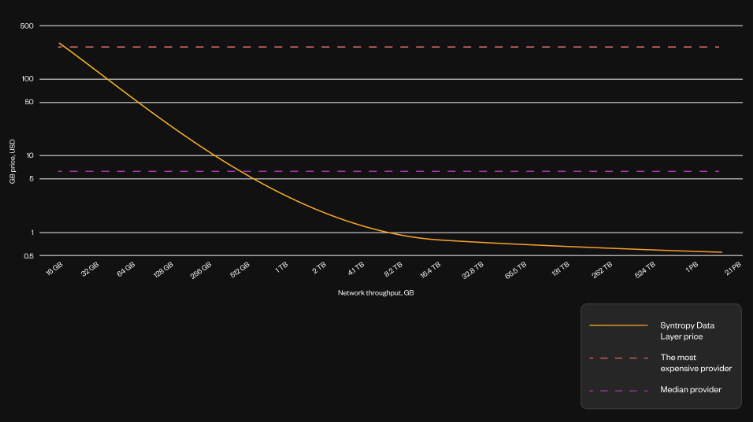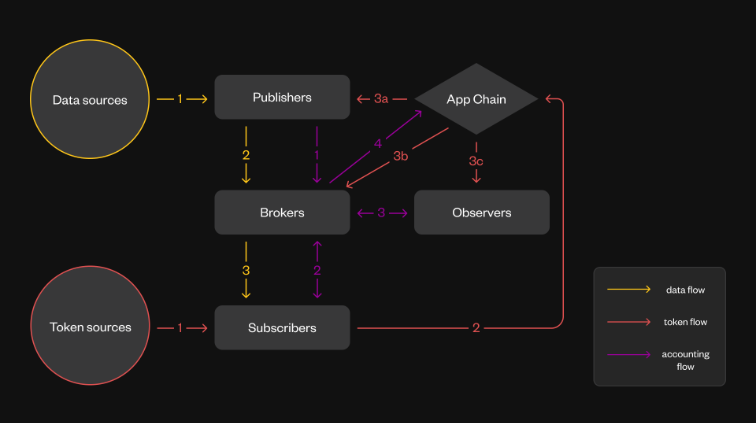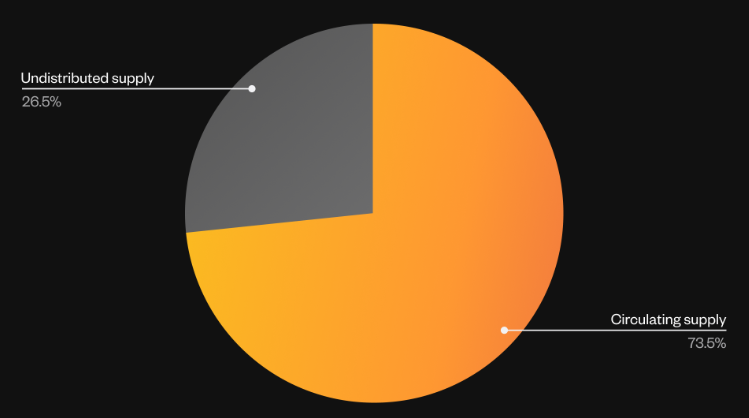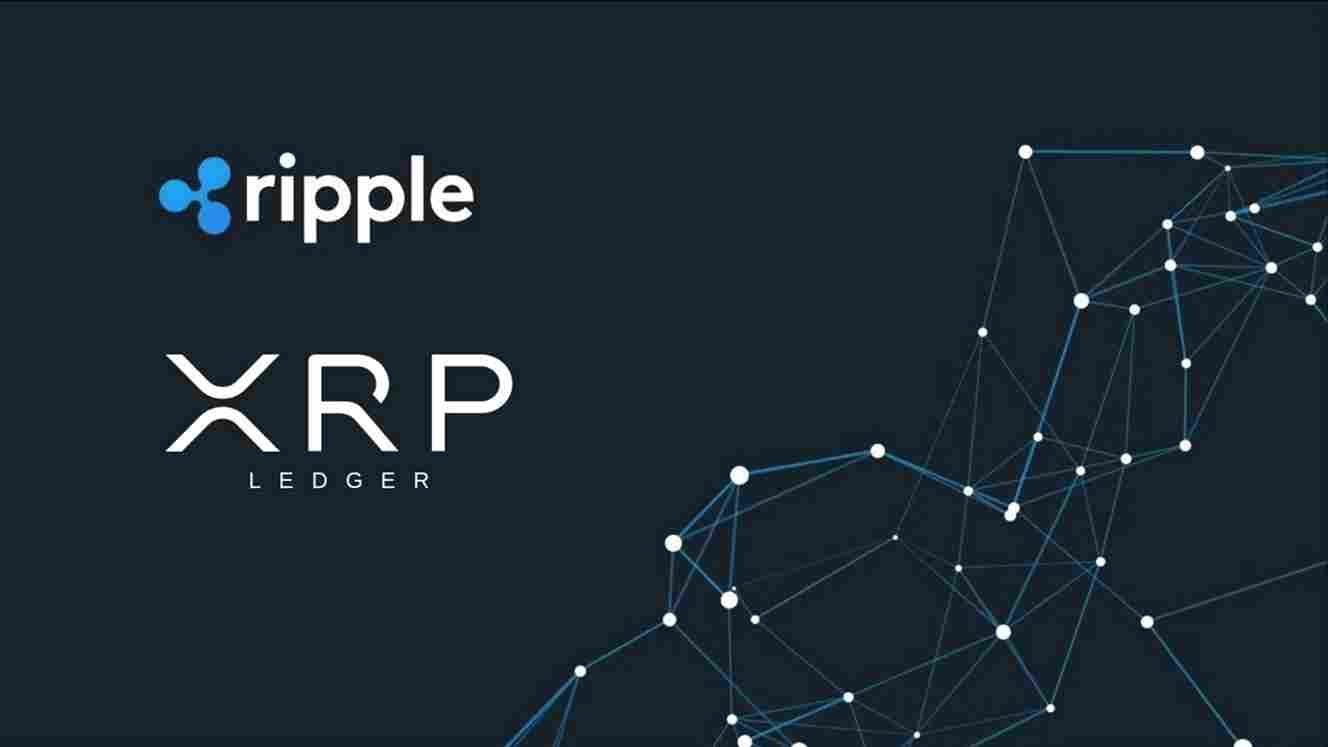Exploring Synternet: The Future of Web3 Data Access
In today’s fast moving blockchain world, getting reliable and real time data from different blockchains is a big challenge for developers, businesses, and users. Synternet is a blockchain platform that solves this problem with its Data Layer protocol. This article explains what Synternet is, how its Data Layer works, and why it’s important for the next generation of decentralized applications (dApps). To help everyone understand this innovative technology and its role in making Web3 data accessible.
What is Synternet?
Synternet is a blockchain that creates a flexible and connected data system, working smoothly with all major blockchain networks. At its core is the Data Layer, a protocol that acts as a customizable link between blockchains. This layer is designed for efficiency, security, and compatibility, allowing developers, organizations, and users to share and access data in a fully decentralized way. By removing the need for centralized services, Synternet provides quick and easy access to both real-time and historical blockchain data. Its modular design supports the creation of new dApps, opening up exciting possibilities for innovation in the Web3 space.
Why the Data Layer Protocol Exists
The Synternet Data Layer protocol was created to make sharing and accessing blockchain data easier. Anyone can publish any kind of data on the Data Layer, but it’s specially built for Web3 data. Full nodes connected to blockchain networks can sell the data they produce through Synternet. Developers building dApps can buy this data using digital tokens. This system, called the Synternet Data Layer, encourages data sharing by rewarding participants.
The problem with current blockchain data access is that most dApps rely on centralized systems, even though they claim to be decentralized. The data starts from decentralized blockchains but goes through centralized databases and is accessed using application programming interfaces (APIs) controlled by single companies. This makes dApps dependent on traditional Web2 solutions, which goes against the idea of decentralization.
The Synternet Data Layer solves this by setting rules for verifying participants, granting access to data, and tracking data usage, all enforced by blockchain agreement (consensus). It has three key strengths:
- Decentralization: It makes blockchain data access open and fair, so anyone can provide or use data through a decentralized system.
- Usability: The system uses a utility token to reward participants, ensuring high-quality service and keeping data costs low.
- Scalability: Instead of using centralized APIs, it uses a Publish Subscribe (PubSub) model, which reduces the work needed from data sources and supports a network of messaging brokers.

Key Features of the Data Layer
The Synternet Data Layer has unique features that make it a powerful tool for Web3 data access.In terms of decentralization, anyone can join as a data provider in an open Web3 data market. Token holders decide which providers are trustworthy based on the quality of their data and performance. The Synternet token acts like “fuel” for Web3 data, making the relationship between providers and consumers fair and transparent through token-based rewards.
For usability, the protocol offers data at lower prices than the current standards for Remote Procedure Call (RPC) nodes. As more people use the Data Layer, the cost per gigabyte of data will likely drop. At the high price end, most costs come from fixed hardware servers, while at the low price end, the cost of sending data through the network is about 30-40% of the total cost, making it affordable for users.
For scalability, Synternet uses a PubSub model instead of the traditional request reply model. In the old model, every request requires the data source to do calculations. In the PubSub model, calculations happen only once at the source, making the system much more scalable and able to compete with existing solutions like RPC nodes and centralized APIs.
How the Synternet Protocol Operates
The Synternet Data Layer protocol enables decentralized data delivery and payments. Services are identified by specific names called subjects, which help Publishers (data providers) and Subscribers (data users) find each other. Publishers stream data under these subjects, and the data travels through a network of Brokers to authorized Subscribers or their Clients. The protocol has three main parts:
- Publish-Subscribe Protocol and SDKs: This system, based on a version of NATS, allows Publishers to send data to Brokers just once, who then distribute it to Subscribers. Synternet and its community provide software tools (SDKs) in multiple programming languages to make it easier for Publishers and Subscribers to join the network.
- Application-Specific Chain (App Chain): Built using the Cosmos SDK and CometBFT consensus, the App Chain handles agreements, accounting, and payments. It uses staking and rewards to ensure participants act honestly, managing registration, authentication, authorization, accounting, payments, and penalties for misbehavior.
- Data Layer Tokenomics: Subscribers bring value by paying for data, while Publishers compete on price, data quality, and service efficiency. Brokers earn fixed fees, and Observers check Broker actions to keep the system secure. Early participants receive subsidies to encourage involvement.

The Synternet Network Token ($SYNT)
The Synternet token ($SYNT) is the native cryptocurrency of the Synternet Network, used for security, rewards, and governance. It supports the goal of creating the leading open protocol for Web3 data. The tokenomics are based on three principles: providing Web3 data at scale with fair prices, enabling community governance to improve the protocol, and maintaining the token’s value through its use in the network.
The protocol has three layers: the App Chain, which manages the application’s state; the Data Layer, which handles Web3 data supply and demand; and the PubSub protocol, which enables data streaming. The $SYNT token is vital for both the App Chain and Data Layer, supporting transactions and state changes.
The $SYNT token has several uses:
- It secures the chain and Data Layer through staking, delegation, and slashing mechanisms.
- It allows token holders to propose and vote on protocol upgrades.
- It acts as a payment method for data services.
- It reflects the ecosystem’s activity as a store of value.
On the App Chain, Validators run the consensus protocol, and Delegators support security by delegating tokens. Validators earn gas fees and block formation rewards, with a limit of 100 active Validators at launch. Delegators can bond, withdraw, or redelegate tokens, but misbehavior by Validators can lead to slashing penalties.
On the Data Layer, economic actors include Publishers, who produce data; Subscribers, who buy data; Brokers, who relay data; and Observers, who verify Broker actions. All actors lock tokens as credit, which can be slashed for misconduct. Subscribers drive value, while Publishers, Brokers, and Observers earn rewards, with subsidies available in the early stages.
Synternet’s Role in DeFi and AI
The Synternet Protocol powers AI Agents like Synternet Insights and Syntoshi, which monitor high-risk DeFi areas such as wrapped assets, liquid staking, and cross-chain bridges. By delivering verified, real-time blockchain data, these agents quickly detect issues like depegs, hacks, or systemic threats. The PubSub model ensures real-time data delivery, reduces computational work, and supports decentralization, making it perfect for DeFi applications. Synternet Insights tracks proof-of-reserves for BTCfi assets, cross-chain bridges, and DeFi protocols, giving traders and protocol teams real-time visibility into fund movements. This helps traders stay ahead of market shifts and allows teams to manage risks effectively. Syntoshi, the flagship AI Agent, focuses on cross-chain wrapped assets, detecting anomalies and sharing valuable insights with its community.
$SYNT Token Details
As of August 7, 2025, the $SYNT token has the following details:
- Price: $0.01383
- Market Cap: $13,895,192
- Fully Diluted Valuation: $15,402,375
- 24-Hour Trading Volume: $1,217,967
- Circulating Supply: 1,005,077,300
- Total Supply: 1,114,096,000
- Max Supply: 2,500,000,000
$SYNT tokens are available on exchanges like HTX, KuCoin, and MEXC, with HTX having the highest trading volume for the SYNT/USDT pair. The token reached an all-time high of $1.05 and an all-time low of $0.00923, currently trading 98.68% below its peak and 50.36% above its lowest price. A recent burn of 82,044,507 tokens (6.9% of total supply) aims to reduce inflation and increase token value.

Security and Audits
Synternet takes security seriously, partnering with Certik, a top blockchain security firm, for ongoing audits of its smart contracts. This ensures the protocol remains reliable and safe, quickly addressing any potential issues to protect users.
The Team Behind Synternet
The Synternet team includes experts from major organizations like Ernst & Young, Swisscom Blockchain, J.P. Morgan, Danske Bank, Royal Bank of Scotland, Umbrella Network, Blockchain Valley, and Orion Securities. Led by CEO Daniel Haudenschild, with co-founders Jonas Simanavicius and Kipras Kazlauskas, the team brings together skills in blockchain, finance, and product development to build a dependable and scalable platform.
Becoming a Validator
To run a Synternet Data Layer node as a Validator, specific hardware is required: an x86-64 multi-core CPU (2 cores minimum, 4 recommended), 32GB RAM (16GB if API/gRPC/RPC are disabled), 1TB NVMe SSD storage, and a 100Mbps internet connection with TCP traffic allowed on port 26656. Validators need $SYNT tokens, which can be bought as ERC-20 tokens on exchanges like Uniswap and bridged to the synternet-1 mainnet, or purchased directly on Osmosis and sent via IBC. Cosmovisor, a tool for managing Cosmos SDK-based chains, helps Validators handle binary upgrades without restarting nodes. Operators must verify the trustworthiness of upgrades by checking sha256 signatures.
Providing Liquidity and Earning Rewards
Liquidity providers (LPs) on Uniswap V3 can earn swap fees by providing liquidity within a price range. They can also stake their position NFT to earn additional rewards during incentivized periods, such as from July 5, 2025, to October 5, 2025, with a total of 225,000 $SYNT available (about 75,000 $SYNT per month). To participate, LPs must approve their NFT on the Uniswap V3 Staker contract and send it to the contract to deposit and stake it. Rewards can be checked using the getRewardInfo method, and LPs can unstake, claim rewards, or withdraw their NFT using specific contract methods, ensuring they follow the correct incentive data.
Synternet’s Global Agent Economy
Synternet is creating an open marketplace for real-time, AI-ready data, powering intelligent Agents that transform how DeFi participants monitor and act on cross-chain activity. Unlike traditional AI tools that rely on outdated data from scraped websites or centralized APIs, Synternet streams verified blockchain data directly to Agents, making it fast and trustless. Agents can earn by selling insights like price predictions or risk assessments, creating a decentralized marketplace. $SYNT holders stake on the best Agents, earning a share of their fees, which encourages high-quality intelligence. Agents can also build on each other’s data, combining it with external sources to create powerful, flexible intelligence flows.
Collaborations in DeFi
Synternet works with leading partners to tackle challenges in cross-chain assets and DeFi, enabling use cases like unlocking asset value and seamless execution across networks. These partnerships show a shared commitment to solving key issues in decentralized finance.
Synternet Insights and Syntoshi in Action
Synternet Insights is a powerful Agent that monitors proof-of-reserves for BTCfi assets, cross-chain bridges, DeFi protocols, and high-yield opportunities. It provides clear visibility into fund movements, helping traders spot market shifts early and enabling protocol teams to manage risks with timely alerts. As more Agents join, the network grows stronger and smarter. Syntoshi, Synternet’s flagship AI Agent, integrates with the protocol and Synternet Insights to turn live on-chain data into actionable insights. It specializes in cross-chain wrapped assets, detecting depegs, hacks, and anomalies quickly, and shares valuable trends with its community. Using retrieval-augmented generation (RAG), Syntoshi is constantly improving, pushing the boundaries of AI and real-time crypto data.
Recent Updates and Community Engagement
In 2025, Synternet achieved major milestones, including launching its agentic framework on June 25, enabling public access to Syntoshi via a web UI and Telegram. On-chain governance started on May 7, allowing $SYNT holders to shape the network’s future. The Model Connection Protocol (MCP) went live on May 29, providing permissionless access to real-time data for AI tools. Partnerships with Allora, Maiga AI, CoreDAO, and Fractality, announced between March and April, expanded Synternet’s reach in DeFi and AI. The community can join through Discord, Telegram, X, and LinkedIn, or explore Synternet’s GitHub to start building. Resources like documentation, blogs, and a blockchain explorer are available, along with opportunities to participate in governance or develop on the protocol.
Synternet as the Bandwidth Layer
Synternet is the bandwidth layer for modular Web3 infrastructure, completing the stack alongside blockspace (computation) and data availability (memory). It enables real-time publishing, live subscriptions, and ongoing coordination, ensuring data moves quickly and efficiently. Unlike static data layers, Synternet supports automation and seamless user experiences, making it essential for dApps, AI Agents, and reflexive protocols. Its collaboration with Avalanche and CoputeAI highlights its role in delivering specialized, real-time intelligence across ecosystems.
Conclusion
Synternet’s Data Layer protocol is a groundbreaking solution for decentralized data access, offering scalability, usability, and true decentralization. By providing real-time, verified data, it empowers developers and users to create innovative Web3 applications. With its strong team, active community, and ongoing developments, Synternet is set to connect blockchains and drive the future of decentralized finance and AI worldwide.




